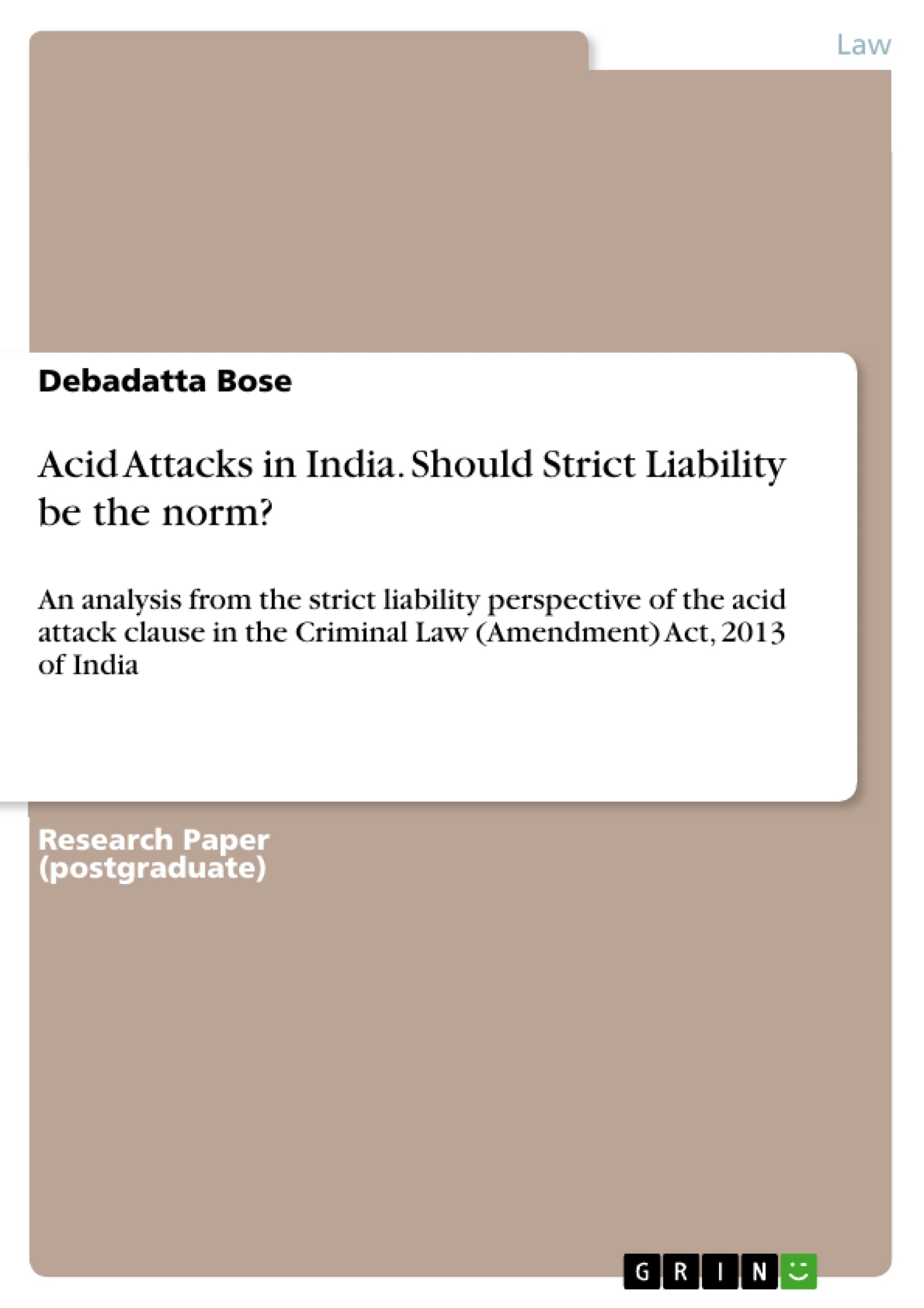This article deals with the Indian Criminal Law Amendment Act, 2013 which was passed as a reaction after the 2012 gang rape case that happened in Delhi and signaled that it was time to change the penal laws for the protection of women.
One change included in the act was Section 326A – relating to acid attacks. This section is gender neutral in nature and this article studies the judicial history of acid attacks and of section 326A, along with providing a critical analysis of the provision in the legislation.
Finally, this article shall study and conclude on the application of ‘strict liability’ on this provision and provide the author’s views on the same whether the legislation we have is adequate enough or not, or what addition should have been made by the government on the face of it from the Law Commission Report.
Table of Contents
Introduction
Ravinder Singh v. State of Haryana
Gulab Sahiblal Shaikh v. The State of Maharashtra
Marepally Venkata Sree Nagesh v. State of Andhra Pradesh
Balu v. State (represented by the Inspector of police)
Devanand v. The State
Ramesh Dey and ors. v. State of West Bengal
Ram Charittar and Anr. etc. v. State of Uttar Pradesh etc.
Awadhesh Roy v. State of Jharkhand
State (Delhi Administration) v. Mewa Singh
Acid Attack and Strict Liability
Absolute crimes
Intentional Crimes
The Conclusion: Should it be a strict liability?
Bibliography
Books
Journals
Internet Sources
- Quote paper
- Debadatta Bose (Author), 2014, Acid Attacks in India. Should Strict Liability be the norm?, Munich, GRIN Verlag, https://www.grin.com/document/307901
-

-

-

-
Upload your own papers! Earn money and win an iPhone X. -

-
Upload your own papers! Earn money and win an iPhone X. -

-
Upload your own papers! Earn money and win an iPhone X. -

-
Upload your own papers! Earn money and win an iPhone X. -

-
Upload your own papers! Earn money and win an iPhone X. -

-
Upload your own papers! Earn money and win an iPhone X.

